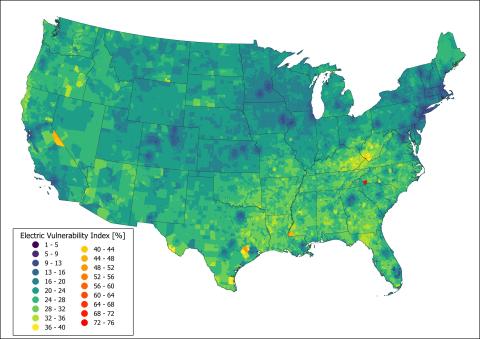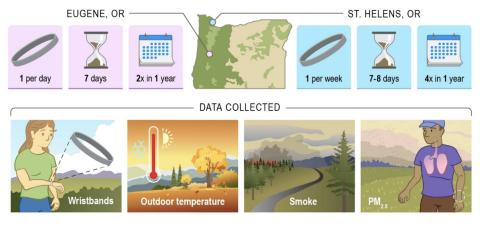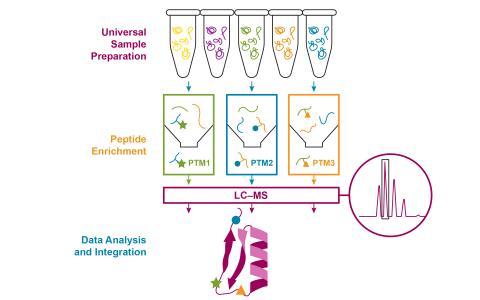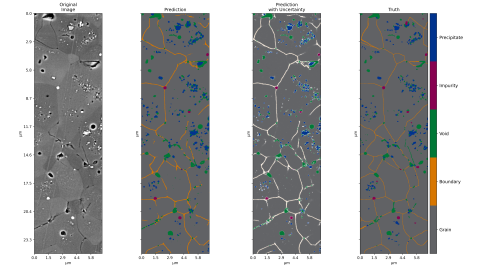Uninterrupted access to electricity is critical to the safety and security of American households. More frequent and extreme emergency events increase outages across the country, disproportionately impacting vulnerable communities that experience the most frequent and longest outages, are most...
Filter results
Category
- Scientific Discovery (404)
- Biology (287)
- Earth System Science (167)
- Human Health (113)
- Integrative Omics (96)
- Microbiome Science (50)
- National Security (32)
- Computational Research (25)
- Computing & Analytics (18)
- Energy Resiliency (14)
- Chemical & Biological Signatures Science (12)
- Weapons of Mass Effect (12)
- Materials Science (11)
- Chemistry (10)
- Data Analytics & Machine Learning (9)
- Renewable Energy (8)
- Computational Mathematics & Statistics (7)
- Data Analytics & Machine Learning (7)
- Atmospheric Science (6)
- Ecosystem Science (6)
- Visual Analytics (6)
- Coastal Science (4)
- Energy Storage (4)
- Plant Science (4)
- Solar Energy (4)
- Bioenergy Technologies (3)
- Energy Efficiency (3)
- Transportation (3)
- Cybersecurity (2)
- Distribution (2)
- Electric Grid Modernization (2)
- Grid Cybersecurity (2)
- Subsurface Science (2)
- Water Power (2)
- Wind Energy (2)
- Advanced Lighting (1)
- Computational Mathematics & Statistics (1)
- Environmental Management (1)
- Federal Buildings (1)
- Geothermal Energy (1)
- Grid Analytics (1)
- Grid Energy Storage (1)
- High-Performance Computing (1)
- Terrestrial Aquatics (1)
- Vehicle Technologies (1)
- Waste Processing (1)
Tags
- Virology (77)
- Immune Response (51)
- Time Sampled Measurement Datasets (51)
- Differential Expression Analysis (46)
- Gene expression profile data (45)
- Homo sapiens (42)
- Predictive Phenomics (36)
- Multi-Omics (33)
- Mass spectrometry data (32)
- Viruses (28)
- Omics (26)
- Mass Spectrometry (25)
- Soil Microbiology (25)
- Health (23)
- Virus (23)
- MERS-CoV (19)
- Mus musculus (19)
- Proteomics (18)
- Synthetic (14)
- Genomics (13)
- sequencing (13)
- West Nile virus (13)
- High Throughput Sequencing (11)
- Influenza A (11)
- Metagenomics (10)
- PerCon SFA (10)
- S. elongatus PCC 7942 (10)
- Ebola (9)
- Machine Learning (8)
- Microbiome (8)
Understanding how chemical exposure varies with and between people over time is a critical component of characterizing the exposome—the totality of exposures over the lifespan. However, this remains an understudied aspect of exposomic research. Our objective was to investigate trends in variability...
Created 2025-06-03T23:16:59+00:00 by LN Anderson .Currently pending DOI assignment for public release. Integrative SP3 Workflow for Multi-PTM Proteomics Profiling (PPI-TZ-DP0) The purpose of this experiment was to evaluate a new standardized method approach for proteomics sample processing designed...
Category
Energy insecurity affects most low-income households in the United States. Energy insecurity, which is characterized by a household’s inability to afford their energy needs, often leads to risky choices, causing other forms of insecurity including food and health. Although there are government...
Category
Irradiated/Irradiated_Calibrate/Iradiated_FL_TOPO_Meta • Performance metrics for all irradiated models in file starting with “all_notebooks” • Defect information within each model folder in csv files ending in “defects” and “defects_truth”, with “truth” for predicted images • Ripley results within...
This dataset represents the results of the Whole-Building Life Cycle Assessment (WBLCA) of The Circular Home and a structurally equivalent Baseline Home. The WBLCA is conducted with U.S. conventions for an intended location in Spokane, WA in Climate Zone 5B. The WBLCA follows ISO 14040/14044...
Data package for Lipids represent a dynamic, yet stable pool of microbially-derived soil carbon This data is published under a CC0 license . The authors encourage data reuse and request attribution by referencing the below citations for the data packages and associated manuscript. Please cite as...
Please cite as : McClure, R. and Janet Jansson. 2025. EVT 16s Data and Large Supplementary Files . [Data Set] PNNL DataHub. https://doi.org/10.25584/2530740. This data is published under a CC0 license . The authors encourage data reuse and request attribution by referencing the above citations for...
Category
Mantis Shrimp Dataset -- Target CSVs Download Section
Mantis Shrimp FFCV Dataset Download Section
Mantis Shrimp Dataset -- wget scripts Download Section
Train Image Blocks Download Section 1.8TB
Mantis Shrimp Dataset -- Indices and Masks Download Section
Mantis Shrimp Models Download Section
Validation Image Blocks Download Section 256GB









